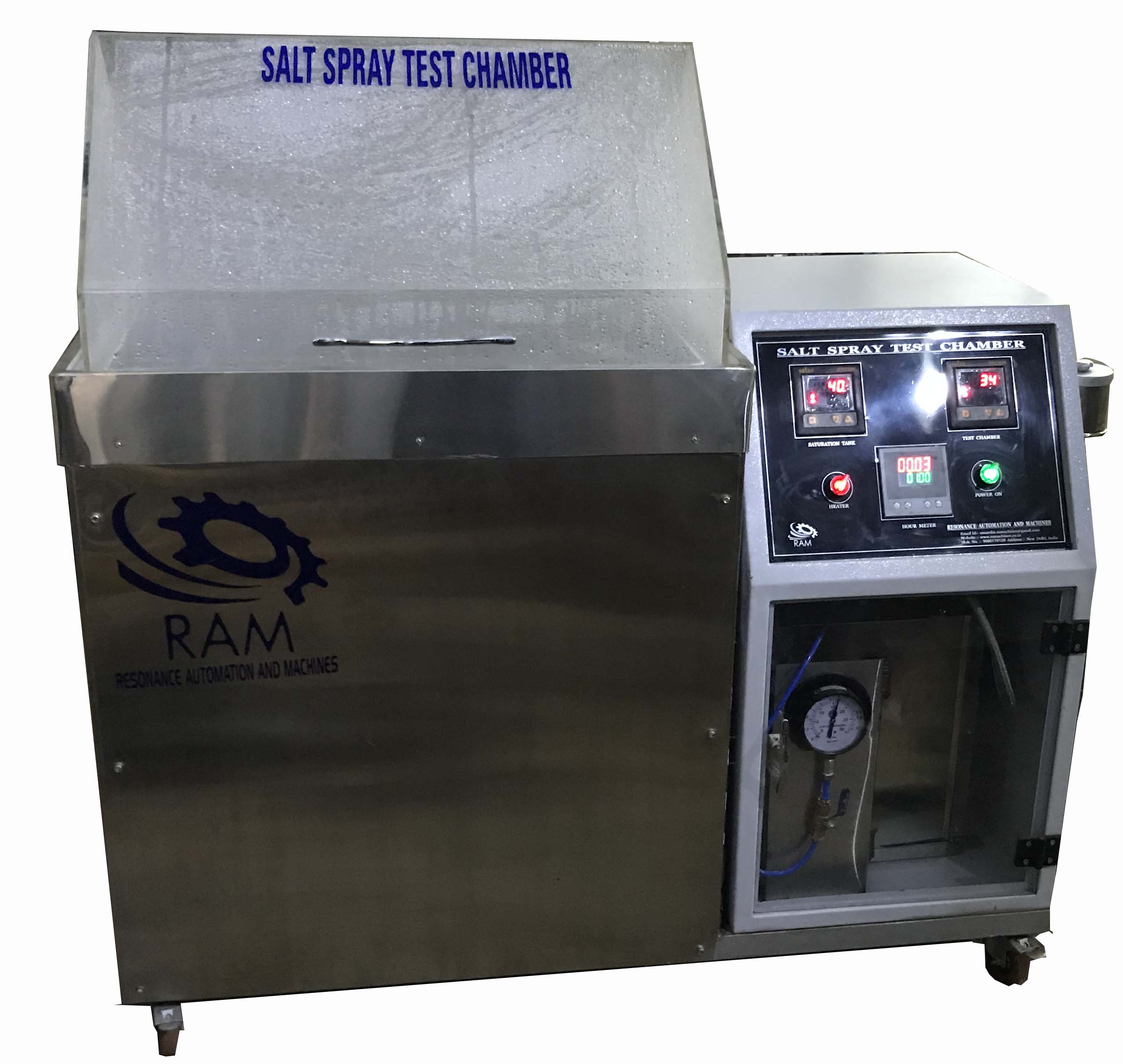- 99XXXXXX29
- XXXXXXX@XXX.com

- Model No: SSTCRAM
- Category: Machinery
- Keywords: SALT SPRAY TEST CHAMBER , Corrosion Test Chamber, Salt Spray Fog Test Chamber
- Manufacturer Name: RESONANCE AUTOMATION AND MACHINES
- Packing size:
- Price: ₹180,000
Description
The salt spray (or salt fog) test is a standardized and popular corrosion test method, used to check corrosion resistance of materials and surface coatings. Usually, the materials to be tested are metallic (although stone, ceramics, and polymers may also be tested) and finished with a surface coating which is intended to provide a degree of corrosion protection to the underlying metal. Salt spray testing is an accelerated corrosion test that produces a corrosive attack to coated samples in order to evaluate (mostly comparatively) the suitability of the coating for use as a protective finish. The appearance of corrosion products (rust or other oxides) is evaluated after a pre-determined period of time. Test duration depends on the corrosion resistance of the coating; generally, the more corrosion resistant the coating is, the longer the period of testing before the appearance of corrosion/ rust. The salt spray test is one of the most widespread and long established corrosion tests. ASTM B117 was the first internationally recognized salt spray standard. Other important relevant standards are ISO9227, JIS Z 2371 and ASTM G85. SPECIFICATION RESONANCE AUTOMATION AND MACHINE® Salt Spray (Fog) Tester has been designed strictly as per the relevant standard to assess the ability of rust proofed components to withstand corrosion due to atmospheric conditions. It is double walled with glass wool insulation. o Temperature Range – Ambient to 45oC o Temperature Accuracy +/- 1oC o Temperature Control – Solid State Digital Programmable Temperature Controller cum Indicator with special zero corrosion PT 100 Sensor o Air Regulator: A moisture cum oil filter and air regulator ranging from 0 to 30 psi is provided. o Construction: FRP–Fibre Reinforced Plastic o Digital indicator o Time and Temperature are settable Related Standards: JIS Z 2371, ASTM B117 – 11, IS: 5528, IS: 6910 (R2003)